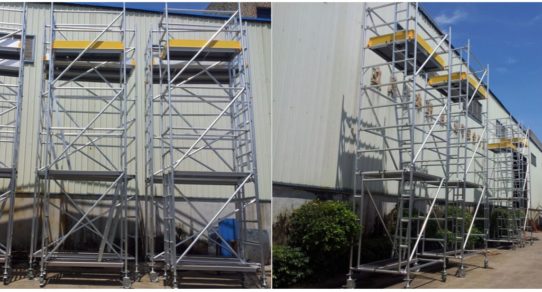The process of erecting and dismantling scaffolds in Singapore requires strict adherence to safety protocols to ensure the well-being of workers and the successful completion of construction projects. In this article, we provide an optimized guide on the step-by-step procedures for erecting and dismantling scaffolds in Singapore, highlighting the importance of following proper techniques and promoting a culture of safety in the industry.
Planning and Preparation
Before erecting a scaffold, thorough planning and preparation are essential. Evaluate the site conditions, including ground stability and proximity to overhead power lines. Determine the appropriate scaffold type and size based on the project requirements. Obtain necessary permits and approvals from relevant authorities.
Selecting the Right Scaffold Components
Choose scaffold components that meet safety standards and are suitable for the intended application. Ensure that scaffold frames, braces, platforms, guardrails, and ladders are in good condition and free from defects or damage. Use connectors and fasteners that are compatible with the scaffold system.
Foundation and Base Preparation
Prepare a stable and level foundation for the scaffold. Ensure that the ground is free from debris, soft spots, or uneven terrain. Use base plates or adjustable leveling jacks to provide a solid footing. Follow manufacturer guidelines for proper scaffold base preparation and leveling.
Erecting the Scaffold
Start by assembling the scaffold frames and connecting them securely. Install braces diagonally to enhance stability. Add platforms at appropriate intervals and secure them to the scaffold frames. Install guardrails and toeboards to prevent falls. Ensure proper access points and safe climbing methods.
Securing and Stabilizing the Scaffold
Stability is crucial for scaffold safety. Use tie-ins, anchors, or other means to secure the scaffold to the structure or adjacent surfaces. Install diagonal braces or cross-bracing for additional stability. Consider wind loads and other external factors that may affect scaffold stability.
Inspections and Load Capacity
Before allowing workers onto the scaffold, conduct a thorough inspection to ensure its structural integrity. Verify that all components are securely connected, guardrails are in place, and platforms are free from debris. Communicate the scaffold’s maximum load capacity to prevent overloading.
Dismantling the Scaffold
When dismantling the scaffold, follow the reverse order of the erection process. Start by removing platforms, guardrails, and accessories. Carefully disassemble the scaffold frames, ensuring that workers are protected from falling objects. Use proper lifting equipment and techniques when removing heavy components.
Proper Storage and Maintenance
After dismantling, store scaffold components in a designated area to prevent damage or loss. Inspect and maintain the components regularly, checking for wear and tear, corrosion, or any signs of deterioration. Replace or repair damaged components before the next use.
Conclusion
Erecting and dismantling scaffolds in Singapore requires strict adherence to step-by-step procedures and safety guidelines. By following proper techniques for planning, selecting components, preparing the foundation, erecting the scaffold, securing and stabilizing it, conducting inspections, and dismantling it safely, construction companies can ensure a secure working environment for their workers. At Kim Sing Scaffolding, we prioritize safety in all scaffold-related activities, promoting best practices and providing expert guidance to ensure safe and successful construction projects in Singapore.






